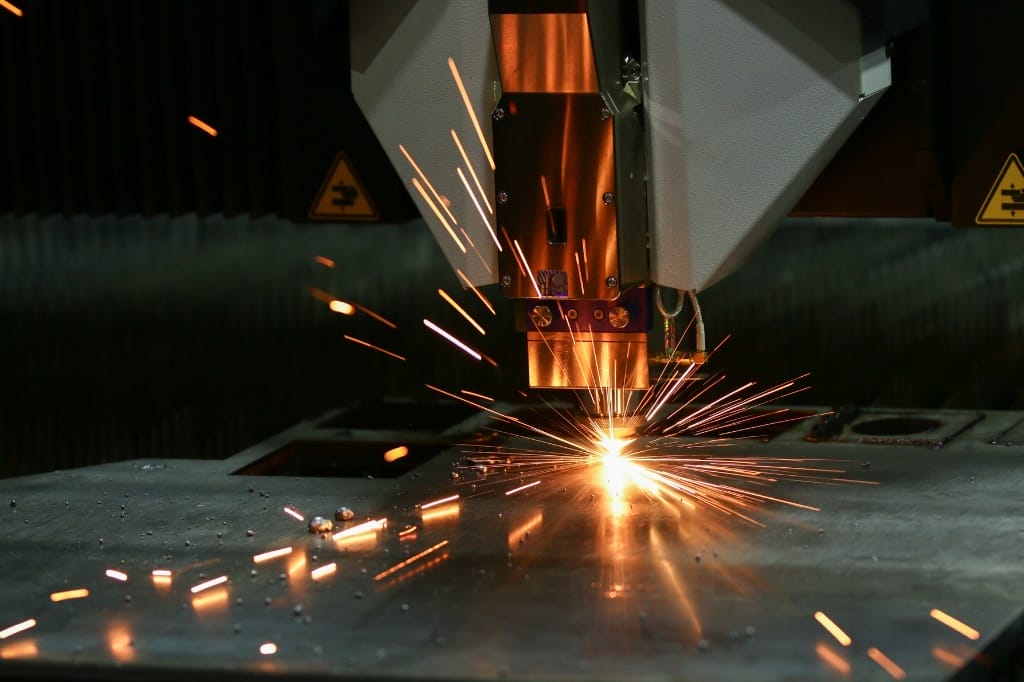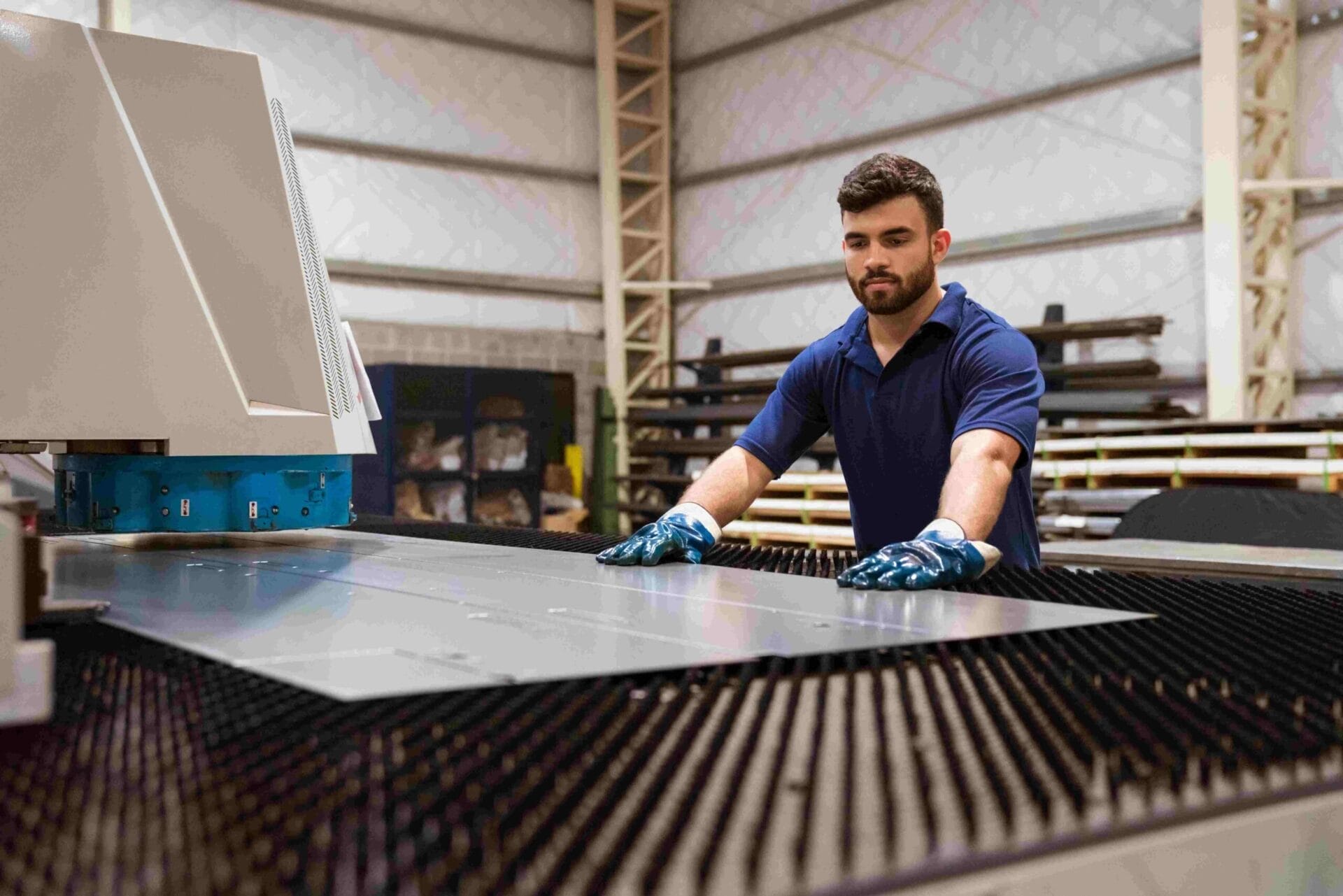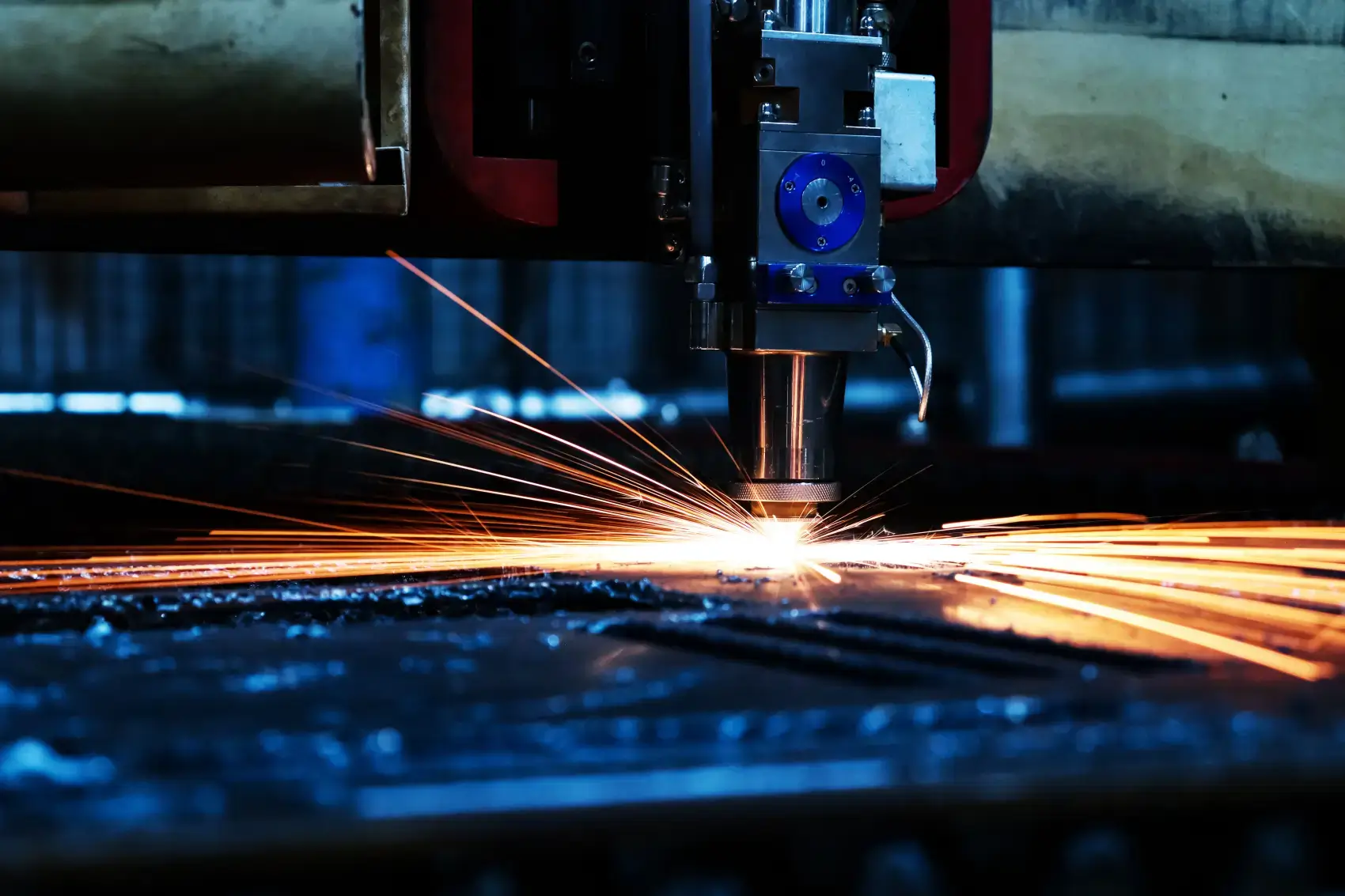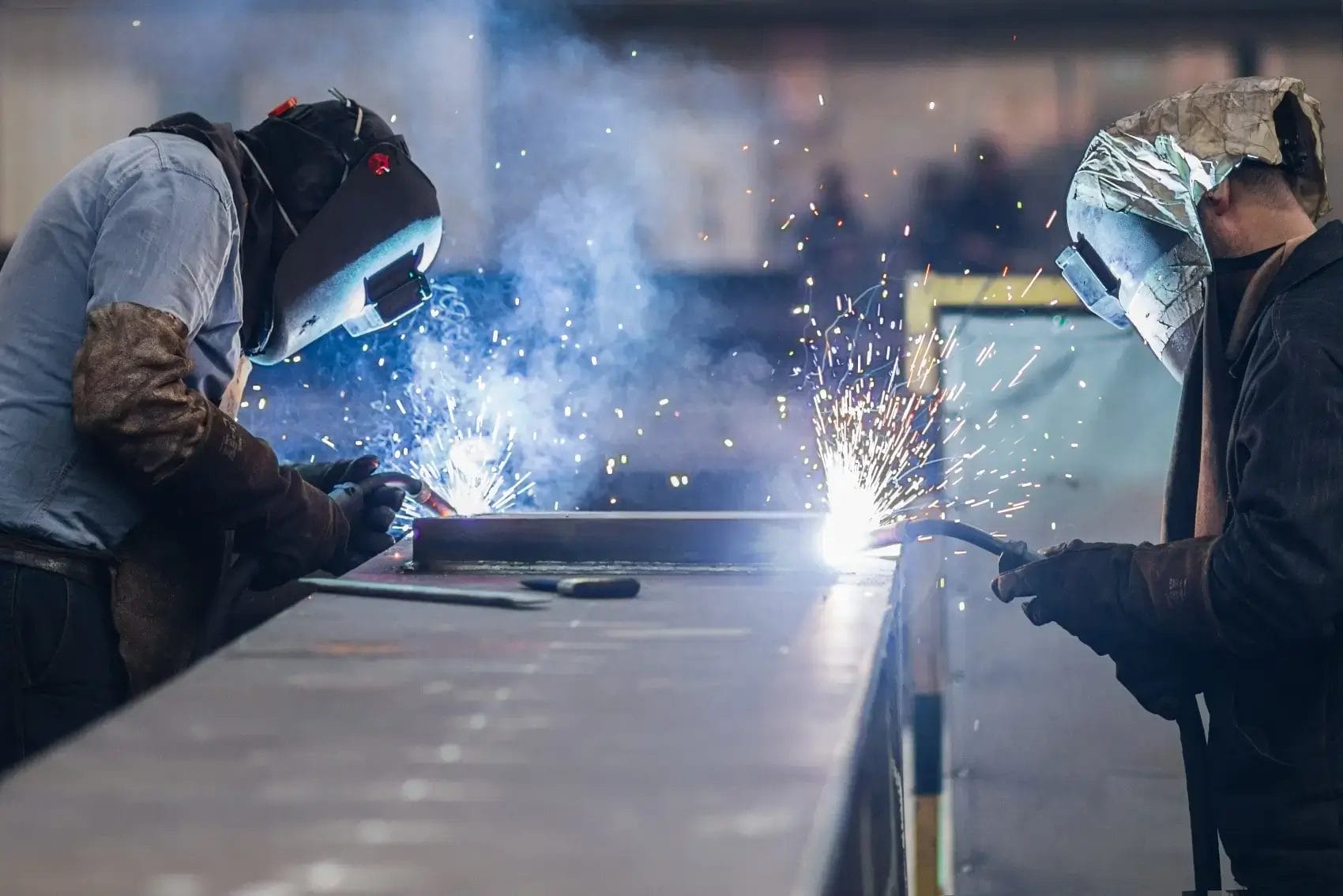Cutting stainless steel is the process of cutting steel sheets into two or more parts. In steel cutting, the right tool and techniques are very important. No matter, if you are using a hacksaw, Miter saw, or band saw, the wrong blade can damage tools and material.
If you lack the right equipment or expertise, outsourcing to providers who laser cut steel online offers a practical and efficient solution. Global suppliers, such as those in China, specialize in cost-effective, high-precision cutting for large-scale or custom projects.
This article will cover ten practical ways to cut stainless steel efficiently and without damaging your material.
Can You Cut Stainless Steel Sheet?
Unanimously, the answer to this question is “yes”! However, cutting stainless steel using the proper equipment and methods is crucial.
If you do not have experience working with this material, we recommend seeking guidance from a professional before attempting any projects on your own.
Now that we’ve answered the question, “Can you cut stainless steel sheet?” Let’s move on to the ten best ways to cut stainless steel.
1. Use a Hacksaw
A hacksaw is one of the most common tools to cut stainless steel. It is an inexpensive option that can be found at most hardware stores.
Be careful to use a hacksaw blade made for cutting metal when using one. Additionally, we advise using a blade with the most teeth per inch. This will lessen the chance of the blade being trapped in the substance. For projects requiring greater precision and efficiency, china cnc machining parts suppliers offer a reliable alternative to manual tools like hacksaws.
2. Use a Miter Saw
Another great option for cutting stainless steel is a miter saw. This tool works with a metal-cutting blade.
For the best results, we suggest using a carbide-tipped blade. When using a miter saw, it is essential to make slow cutting.
If you try to finish the project quickly, the material and blade both will be vulnerable to damage.
3. Use a Bandsaw
Cutting stainless steel is not an easy job. However, if you aim for shorter cuts, you can get high-precision cuts. Similarly, even the complex cutting design will look simple.
Use the right blade to cut stainless steel. If you are using a blade made for wood, it will wear out soon. Keep your blade sharp.
Here is the table of specified blades for cutting stainless steel:
| Blade Material | Coating | Stainless Steel Grade | Material Hardness |
| Carbide | Titanium Nitride | 304 | HB 180 |
| Carbide | Titanium Nitride | 316 | HB 190 |
| Carbide | Titanium Nitride | 410 | HB 270 |
| HSS | None | 304 | HB 180 |
| HSS | None | 316 | HB 190 |
| HSS | None | 410 | HB 270 |
| Ceramic | Aluminum Titanium Nitride | 304 | HB 180 |
| Ceramic | Aluminum Titanium Nitride | 316 | HB 190 |
| Ceramic | Aluminum Titanium Nitride | 410 | HB 270 |
Always remember that cutting stainless steel is quick and easy with the right band saw and blades.
4. Use an Angle Grinder
Angle grinders are available in different types such as corded and cordless tools. However, for cutting stainless steel you need a high-performance grinder. Battery-operated angle grinders do not provide sufficient power.
Therefore, a corded angle grinder can cut stainless steel easily and deliver enough power also. Generally, diamond blades are best to cut stainless steel with an angle grinder. For more advanced machining solutions that ensure precision and durability, consider exploring stainless steel CNC machining services for optimized results.
5. Use a Plasma Cutter
Plasma cutters employ ionized gas to slice through various metals, including stainless steel, aluminum, and brass. These tools are highly efficient and provide smooth cuts suitable for multiple industrial applications. For companies needing bulk cutting with tight deadlines, exploring an online plasma cutting service can streamline production processes and reduce operational costs.
6. Use a Waterjet Cutter
Waterjet cutters are high-pressure machines. Their function is to incorporate a high-pressure water jet to cut the metal. Waterjet cutters can conveniently cut materials like stainless steel, glass, aluminum, and stone.
Waterjet cutting techniques are pretty common in automotive manufacturing. Since the automotive industry requires high-precision cuts for complex shapes, this method is best for making clear and detailed cuts. This precision is also a key aspect of custom sheet metal fabrication, where waterjet cutting is often used to produce tailored parts with exceptional accuracy.
7. Use an Oxy-Acetylene Torch
So, you want to cut stainless steel with an oxy-acetylene torch? This is possible but not the easiest thing to cut metal like stainless steel.
Firstly, you need to set up your torch properly. Reduce the heat a little and make that flame about half an inch long. Don’t go overboard. Then, hold the torch at an angle of 45 degrees and slide it slowly along where you want to cut.
Afterward, let the metal cool down before touching it. It’s hot stuff!
8. Use a Laser Cutter
Laser cutters are known for their exceptional accuracy and are among the finest tools to cut stainless steel and other metals. With laser technology, you can achieve clean, precise cuts, even on intricate designs. However, managing a laser cutter requires expertise and appropriate settings for each metal type.
For businesses without in-house laser-cutting capabilities, outsourcing to a reliable provider offering laser cut steel online ensures you receive expertly crafted components tailored to your specifications. This approach is ideal for companies seeking high-quality results without investing in expensive equipment.
Laser Cutting Settings for Common Metals
| Metal | Material Thickness (mm) | Laser Type | Power (W) | Speed (mm/s) | Gas |
| Stainless Steel | 0.5 – 1 | Fiber | 1000-2000 | 10-20 | Oxygen |
| Stainless Steel | 1 – 3 | Fiber | 2000-3000 | 8-15 | Nitrogen |
| Mild Steel | 0.5 – 1 | CO2 | 800-1200 | 15-25 | Oxygen |
| Mild Steel | 1 – 3 | Fiber | 1500-2500 | 10-15 | Oxygen |
| Aluminum | 0.5 – 1 | Fiber | 1500-2500 | 15-25 | Nitrogen |
| Aluminum | 1 – 3 | Fiber | 2500-3500 | 12-18 | Nitrogen |
| Brass | 0.5 – 1 | CO2 | 800-1200 | 15-25 | Oxygen |
| Brass | 1 – 3 | Fiber | 1500-2500 | 10-15 | Oxygen |
| Copper | 0.5 – 1 | Fiber | 2000-3000 | 12-18 | Nitrogen |
| Copper | 1 – 3 | Fiber | 3000-4000 | 10-15 | Nitrogen |
9. Use an EDM Machine
EDM machines are ideal for cutting stainless steel. With an EDM machine, you can get a precise cut that won’t damage the surrounding material.
EDM machines work by using electrical current to erode the metal. This process is incredibly precise and doesn’t create any heat-affected zones.
Simultaneously, EDM machines are also relatively quick, allowing you to finish your project efficiently. This level of precision makes EDM machines an excellent choice not only for stainless steel but also for other metals like aluminum, where specialized aluminum machining services can ensure high-quality results.
10. Use a CNC Router
CNC Router is used for several applications. You can use this tool for a broader range of tasks e.g cutting and engraving wood to milling aluminum and stainless steel.
However, cutting stainless steel plates with a CNC router requires a set of protocols. For instance, a CNC router is used to cut thick plates which are composed of different metal layers. So, go slow to obtain excellent results.
Comparison of Stainless Steel, Aluminum, and Carbon Steel
| Property | Stainless Steel | Aluminum | Carbon Steel |
| Density (g/cm³) | 7.8 – 8.0 | 2.7 | 7.8 – 8.0 |
| Tensile Strength (MPa) | 500 – 2000 | 70 – 700 | 300 – 700 |
| Thermal Conductivity (W/m·K) | 16 – 50 | 200 – 240 | 40 – 50 |
| Corrosion Resistance | High | High (for certain environments) | Low |
| Cost | High | Moderate | Low |
Stainless Steel Grades and Cutting Thickness
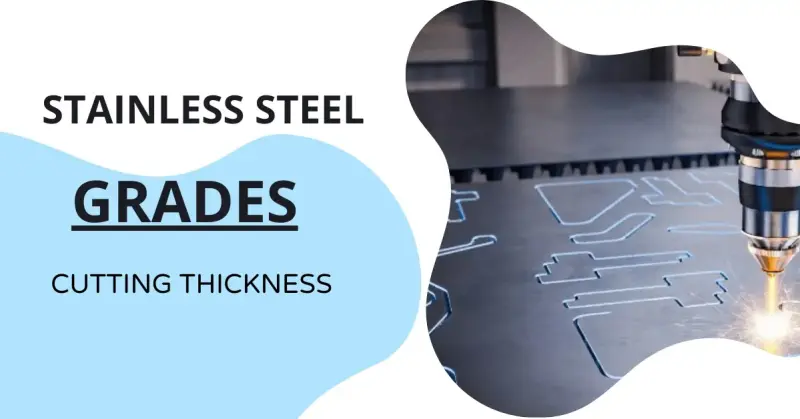
Before cutting any stainless steel grade, you need to understand the different grades first. For example:
- Grade of stainless steel
- Thickness
- Desired cut quality
- Available tools
Thin Sheets-1/8 inch:
- Tin Snips: This is suitable for cutting very thin sheets of 24 gauge of most stainless steel grades, e.g304, 316, 430.
- Aviation Snips: Suitable for thicker sheets such as 18 gauge grades like 304 and 430 are best.
- Shears: Power shears can execute thicknesses up to 1/4 inch.
Medium Thickness (1/8 inch to 1/2 inch):
- Angle Grinder: Angle grinders cut stainless steel grades such as 304, 316, & 430 incorporating abrasive discs.
- Circular Saw: Circular saws make effective straight cuts in medium-thickness sheets such as 3/8 inch of softer grades e.g 304, & 430
- Reciprocating Saw: It is good for thicker sections carrying 1/2 inch. Reciprocating saws are also incorporated in grades e.g 304, 316, & 430.
Thick Stainless Steel (over 1/2 inch):
Plasma Cutter: For thicker sections (up to 2 inches) and execute complex cuts on various grades e.g304, 316, 430.
410 and 420 are harder grades. To cut these stainless steel alloys, you need to go slower. Similarly, 304L, and 316L are heat sensitive grades and have lower carbon content which can’t be cut on higher speed.
| Family | Grade | UNS Number |
| Austenitic (300 Series) | 304 | S30400 |
| Austenitic (300 Series) | 316 | S31600 |
| Austenitic (300 Series) | 301 | S30100 |
| Ferritic (400 Series) | 430 | S43000 |
| Ferritic (400 Series) | 409 | S40900 |
| Duplex | 2205 | S32205 |
| Duplex | 2507 | S32507 |
| Martensitic (400 Series) | 410 | S41000 |
| Martensitic (400 Series) | 420 | S42000 |
| Precipitation Hardening (PH) | 17-4 PH | S17400 |
How to prepare a workspace for Stainless Steel Cutting?
Stainless steel cutting involves several sharp tools. Therefore, it is essential to follow proper guidelines to cut the steel. Below, you will learn how to prepare your workspace for stainless steel cutting.
Location Selection:
Get a big and well-ventilated space. If dust and fumes as cuts are to be produced, air must circulate widely. If possible, have the workshop outside. Alternatively, maximize indoor ventilation with open windows and doors or use of a ventilation system.
Work Surface Preparation:
Use a strong workbench that can support cutting pressure. Metal workbenches are preferred but even solid wood can do. Ensure that the working bench is tightly bolted down or is heavy enough not to wobble.
Workspace Organization:
Keep it clean and tidy in your workplace at all times. To avoid tripping over obstacles on your working path thus making it more efficient, throw away any unnecessary stuff in your work area. Have an assigned place for junk metals. A metal bin is ideal for storing sharp edges of metals safely.
Safety Equipment:
Observe safety by always putting on appropriate protective personal equipment (PPE). Protective goggles are important to use because sparks may fly into your eyes or other materials debris such as grinders might enter them.
Your palms need protection against sharp edges and hot metal; hence you should utilize leather gloves or cut-resistant gloves .
Tool and Material Assembly:
The choice of cutting tool depends on the size of the piece of stainless steel being worked on and its desired style of cuttings.Here are several common ones:
- Fine sheets – Metal shears
- Thick sheets – Angle grinder with metal cutting disc
- Different cuts – Reciprocating saw with metal cutting blade
What are safety precautions to cut stainless steel?
Cutting stainless steel is rewarding for both manufacturers and DIY projects. However, if you do not follow safety precautions to cut steel sheets, there are chances of injuries. Below, you will read the best safety equipment and practical steps you can use to avoid any accidents while cutting steel.
1: Personal Protection Equipment
In personal protection, using the following safety gear provided enhanced protection:
Safety glasses for eye protection. It will save you from metal silver debris and sparks
Heavy duty gloves for hand protection: Leather gloves are suggested to wear before cutting stainless steel. These gloves protect against burns and cuts.
Respiratory Protection: When cutting stainless steel, you are vulnerable to fine dust particles. Always wear a respirator with a P100 filter.
Clothing: Wear the dress with pants and sleeves made of flame-retardant material. It protects your skin from sparks, hot metals, and abrasions. Steel-toed boots can provide extra foot protection.
2. Maintain Safe Work Environment
Adequate ventilation is crucial for your working area. It is suggested to keep your windows and doors opened during the work. Subsequently, you can use a fan to expel fumes and steel particles. Using clamps or a vise, hold stainless steel properly.
3. Cutting Tool Selection
The very first step in cutting stainless steel precisely is to select the correct tools. These cutting tools should have appropriate thickness following the metal sheet. Metal shears, hacksaws, angle grinders with metal cutting discs, reciprocating saws with metal blades, and band saws are the most common tools
4. Safe Cutting Practices:
- Maintain firm control over the grip
- Maintain a safe distance of face and body from flames
- Do not leave Power Tools unattended
- Wear gloves to avoid accidental cuts of sharp edges
What are common issues in cutting stainless steel?
Stainless steel is corrosion-resistant and can be machined following exact design specifications. However, there are also some challenges to cutting the steel. :
1. Heat Generation and Warping:
- Cause: Stainless steel is pretty vulnerable in thermal conductivity, so it is not a good material for dissipating heat.
- Effect: Warping, distortion, and discoloration.
2. Work Hardening:
- Cause: Stainless steel deforms plastically near the cutting zone. This leads to a hard and brittle layer.
- Effect: More cutting force, rapid dulling of blades/discs, and leads to uneven cuts.
3. Heat Tints and Surface Contamination:
- Cause: Excessive heat during cutting can change the surface finish of stainless steel, resulting in a colored oxide layer (heat tint).
- Effect: Heat tint reduces corrosion resistance. Simultaneously, contamination impacts welding & painting significantly.
4. Burr Formation:
- Cause: Blunt or dull blades/discs tear metal. It results in a raised edge (burr) on the cut surface.
- Effect: Burrs can be sharp. It also disturbs the proper fitting or finishing of the cut steel part.
5. Chipping and Cracking:
- Cause: Brittle process or improper technique (e.g., excessive force) leads to chipping & cracking.
- Effect: It reduces part strength which is crucial for product performance.
What is the easiest way to Cut Stainless Steel?
There are different ways to cut stainless steel. All have their advantages as well as disadvantages. The best way to choose the correct method is to consider the thickness of the material, the desired finish, and the amount of time you have.
An oxy-acetylene torch is the best option if you need to quickly cut through thick stainless steel.
A laser cutter or waterjet cutter will produce cleaner cuts for thinner material. An EDM machine is the best choice if you need a precise cut.
If you are looking for a machine that can handle different materials, then a CNC router is the best option. The way to cut stainless steel depends on your requirements.
How can you cut Stainless Steel Rods at Home?
Cutting stainless steel rods at home requires a hacksaw. You should ensure to get the relevant blade too. So you can cut the rod according to a specific dimension. You need to apply constant pressure as you go through the rod.
Finally, giving access to a plasma cutter will assist you in making clean, precise cuts in stainless steel rods. Also do not forget to take precautionary measures and wear safety equipment when cutting metal.
Laser cutting Stainless Steel Problems
Laser cutting stainless steel sheet is a good method to cut stainless steel, but there are a few things to keep in mind. First, laser cutting produces a lot of heat, which can damage the material.
Second, it’s critical to have adequate ventilation because laser cutting generates a lot of dust. Finally, laser cutting is not as precise as other methods, so it’s important to have patience and go slowly.
How can a hole be made in a Stainless Steel Sink?
While most sinks are made of porcelain or another type of ceramic, some are made of stainless steel.
Stainless steel sinks are very durable and easy to clean, but they can be challenging to work with if you need to make a hole in the sink for a new faucet or other fixture.
The good news is that, with the right tools, cutting a hole in a stainless steel sink is relatively easy.
Mark the area where you must cut using a pencil first. After that, cut along the line you just drew using a pair of tin snips or a rotary tool equipped with a metal-cutting bit.
After you’ve cut through the sink, smooth down any sharp edges with a file or piece of sandpaper. With a little patience and attention to detail, you’ll be able to cut a perfect hole in your stainless steel sink.
Can I cut Stainless Steel with a Jigsaw?
Cutting stainless steel with a jigsaw is possible, but it is not always the best tool for the job. Stainless steel is a tough material, and the teeth on a jigsaw blade can quickly become dulled by the metal.
In addition, stainless steel can be difficult to keep track of while cutting, increasing the risk of making mistakes.
For these reasons, it is better to use a power saw or grinder when cutting stainless steel. However, if you do need to cut stainless steel with a jigsaw, be sure to use a blade designed for metal and take care to avoid mistakes.
With the right preparation, cutting stainless steel with a jigsaw can be done safely and effectively.
FAQs
1. What is the best tool to cut stainless steel?
The best tool to cut stainless steel depends on the sheet thickness. For example,
- Angle grinder for medium thickness 1/8 inch to 1/2 inch
- Band Saw for thick Stainless Steel over 1/2 inch
2. What kind of blade will cut stainless steel?
You need following blades to cut stainless steel:
- Tin Snips
- Aviation Snips
- Shears (power)
- Angle Grinder
- Circular Saw
- Band Saw
3. What is the best cutting process for stainless steel?
There are generally fives best cutting processes for cutting stainless steel:
- Laser cutting
- Waterjet cutting
- Plasma Cutting
- Angle Grinder
- Metal Shears
4. Why is stainless steel hard to cut?
Stainless steel is hard to cut for five reasons:
- Low Thermal Conductivity
- High Work Hardening Coefficient
- Heat Tints and Surface Contamination
- Chipping and Cracking
- Burr formation
5. Should you cut stainless steel fast or slow?
You should cut stainless steel slowly because steel has low thermal conductivity. Similarly, with slow cutting you can obtain clean cuts and reduce blade wear.
6. What is the best cutting speed for stainless steel?
Approximate Cutting Speed Range for Stainless Steel (in Surface Feet per Minute – SFM):
- Thin Sheets (1/8 inch): 100 – 200 SFM
- Medium Thickness (1/8 inch to 1/2 inch): 50 – 150 SFM
- Thick Stainless Steel (over 1/2 inch): 30 – 100 SFM
7. What coating is best for cutting stainless steel?
Some popular coating for cutting stainless steel are:
- Titanium Aluminum Nitride (TiAlN)
- Aluminum Titanium Nitride (AlTiN)
- Aluminum Chromium Nitride (AlCrN)


